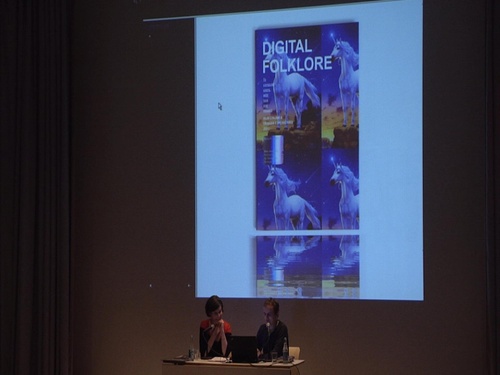
Digital Folklore: A conversation with Olia Lialina and Dragan Espenschied
Date: April 15 2011
In 2008, the New Museum presented Digital Folklore: A Conversation with Olia Lialina and Dragan Espenschied, an artist discussion organized by Rhizome as part of the New Silent series.
How is folk culture defined in the digital age? This is the question that renowned artists Olia Lialina and Dragan Espenschied set out to answer in their book, Digital Folklore (2010), an anthology that examined an emergent kind of amateur, popular art: the kind made by computer users. The artists wrote: “Users’ endeavors, like glittering star backgrounds, kittens, and rainbow gradients, are mostly derided as kitsch or in the most extreme cases, postulated as the end of culture itself. In fact this evolving vernacular, created by users for users, is the most important, beautiful and misunderstood language of new media.” At this talk, Lialina and Espenschied presented their groundbreaking book, and their new definition of contemporary folk art.
The New Silent was a series of programs, presented by the New Museum and organized by its affiliate organization Rhizome, that explored contemporary art engaged with emerging technology and examined the ways digital technologies alter our lives and experiences of urban spaces. The series comprised screenings and performances, as well as a critical conversational strand, which brought together leading scholars, artists, critics, and public figures to illuminate the complex interactions between technology, culture, and creative practice. Named for the generational theories of Neil Howe and William Strauss, the New Silent presented artists working at the furthest reaches of technological experimentation as well as those responding to the broader aesthetic and political implications of new tools and media.